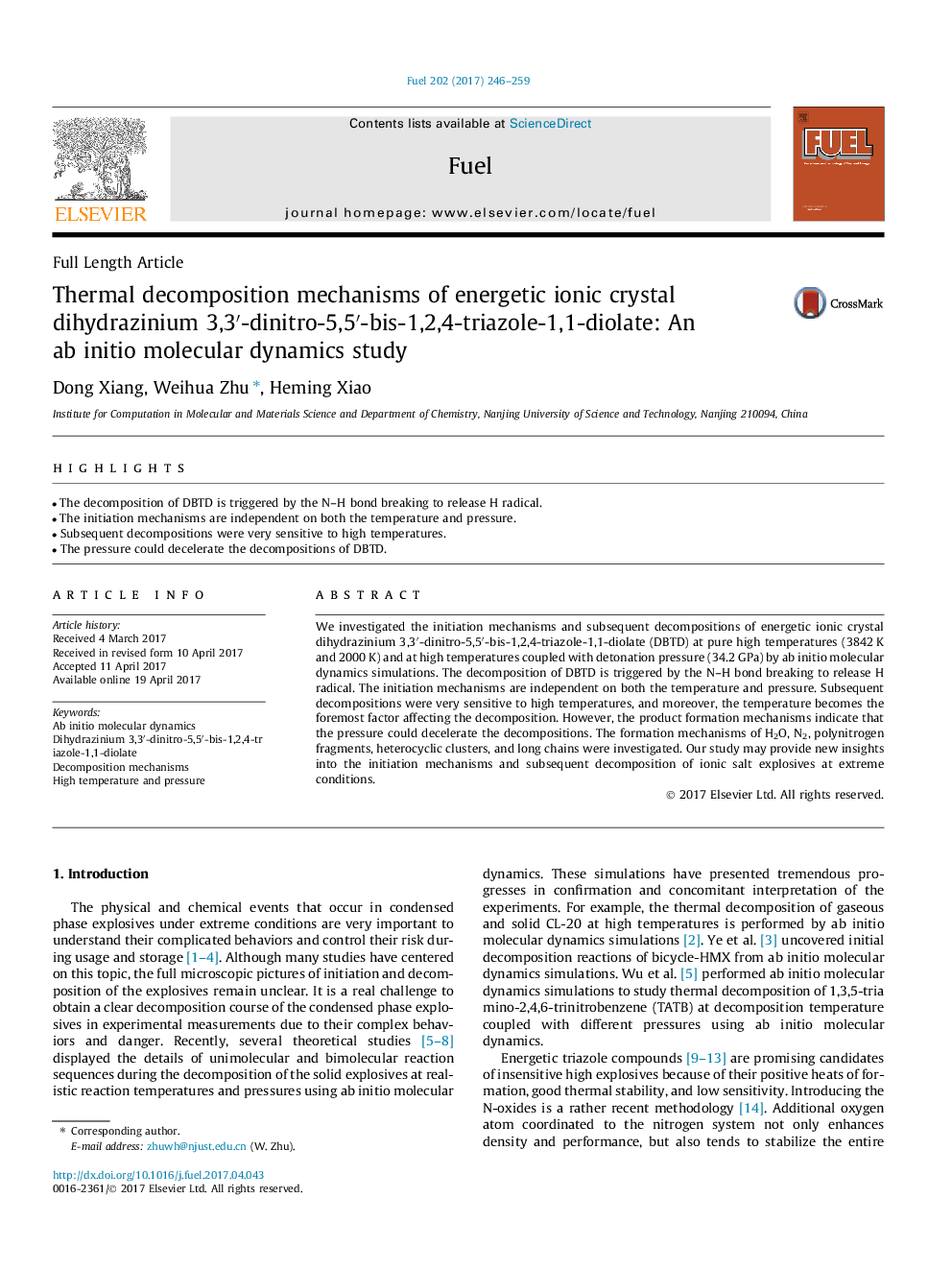| Article ID | Journal | Published Year | Pages | File Type |
|---|---|---|---|---|
| 6474557 | Fuel | 2017 | 14 Pages |
â¢The decomposition of DBTD is triggered by the N-H bond breaking to release H radical.â¢The initiation mechanisms are independent on both the temperature and pressure.â¢Subsequent decompositions were very sensitive to high temperatures.â¢The pressure could decelerate the decompositions of DBTD.
We investigated the initiation mechanisms and subsequent decompositions of energetic ionic crystal dihydrazinium 3,3â²-dinitro-5,5â²-bis-1,2,4-triazole-1,1-diolate (DBTD) at pure high temperatures (3842Â K and 2000Â K) and at high temperatures coupled with detonation pressure (34.2Â GPa) by ab initio molecular dynamics simulations. The decomposition of DBTD is triggered by the N-H bond breaking to release H radical. The initiation mechanisms are independent on both the temperature and pressure. Subsequent decompositions were very sensitive to high temperatures, and moreover, the temperature becomes the foremost factor affecting the decomposition. However, the product formation mechanisms indicate that the pressure could decelerate the decompositions. The formation mechanisms of H2O, N2, polynitrogen fragments, heterocyclic clusters, and long chains were investigated. Our study may provide new insights into the initiation mechanisms and subsequent decomposition of ionic salt explosives at extreme conditions.
